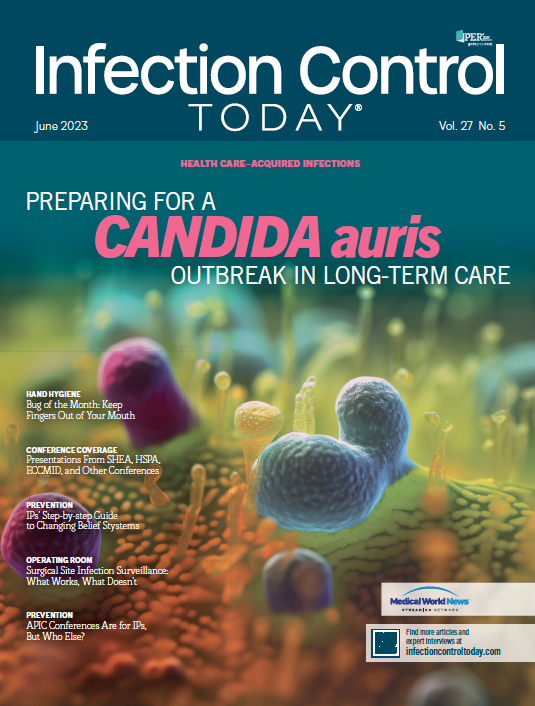Are You Reinventing the Wheel?
Connecting and networking with colleagues, finding the right resources, and joining key organizations can help you become a better infection preventionist.
(Adobe Stock, unknown)

Somewhere in Mesopotamia between 4200 and 4000 BCE, someone became tired of the traditional methods for creating pottery. Although their name or names are now lost to history, they’ve become known as the inventors of the first wheel, initially used for shaping pottery. Although future civilizations would use the wheel in a variety of different ways, no one would ever again be credited with the invention of the wheel. Centuries later, in the 1950s, businesses and advertising would begin using the idiom “reinventing the wheel” to describe the wasteful effort of setting out to do something or create something that already exists. It amuses us to think about someone setting out to invent the wheel when it’s already been in existence for more than 5 millennia. However, we frequently waste our time and effort on projects and problems where solutions and materials already exist. It’s time for us to stop reinventing the wheel.
The field of health care infection control is still less than a century old. When you think about it, we have come a long way in our understanding of the prevention and control of health care–associated infections in a remarkably short time. During this period of advancement in the field, a multitude of resources were developed to aid infection preventionists (IPs) in the prevention and control of HAIs. We have HAI tool kit bundles, facility assessment tools, educational resources, and more at our fingertips, especially with the invention of the internet. Still, despite this wealth of resources, I still occasionally find IPs building an existing tool or resource from scratch. At this point in the field of infection prevention, we must begin asking ourselves, “Has this already been done?” and “Does this already exist?”
As a new IP starting my career in a large academic center, I first led a project on improving hand hygiene in the surgical intensive care unit. As I was creating an educational presentation on hand hygiene, one of my colleagues looked over my shoulder at my budding presentation and asked, “What are you doing? We already have a presentation you can use for that.” She was incredibly kind and genuine, but I felt a little silly for wasting my time creating a presentation that already existed. It took an incredibly short time for me to modify that previously existing presentation to suit my needs. All I needed to do was ask whether someone could point me in the direction of a resource or solution that already existed rather than reinvent the wheel.
As a new IP, I was lucky to work at a large academic medical center with a team of experienced IPs. I was able to bounce ideas off colleagues and ask questions when I came up against a metaphorical wall. However, I quickly learned there was a whole community of IPs with a wealth of knowledge and resources I could draw from. If there is anything I want you to take away from this article, it is this: To avoid reinventing the wheel, we must network with fellow IPs. We will reach further and grow exponentially in this field if we continue working together rather than working in silos. Luckily, whether you’re a new IP or a seasoned professional, there are multiple opportunities for networking that exist within the IP community.
I strongly recommend that all IPs become members of the Association for Professionals in Infection Control and Epidemiology (APIC). Membership with APIC will open doors to resources and a community of IPs. IP Talk, for example, is an APIC-hosted online discussion platform, allowing IPs to ask questions of other IPs, who share knowledge and resources. Magazines and journal articles are another great opportunity for expanding your knowledge, resources, and network beyond the walls of your institution. Infection Control Today, Prevention Strategist, and Infection Control & Hospital Epidemiology are key print resources that I’ve been reading since the beginning of my career as an IP. Infection Control Today’s new article series, IPC Pros Helping Each Other highlights innovative best practices in the field of infection prevention and control, with frontline IPs talking about what’s worked for them in their facilities. It’s a great way to learn from other IPs in the field. Investing the time in reading these articles has allowed me to learn more about the field of infection prevention and control, expanding my knowledge and resources. Networking with other IPs can also be accomplished by actively seeking out experts in the field. I’ve sent dozens of emails to IPs worldwide, asking for their opinion or resources on a particular subject. I’ve been pleasantly surprised over the years by how many emails I’ve received back from experienced professionals eager to advance the field of infection prevention and control. Some of these networking opportunities have helped to advance my own career in the field. Finally, APIC and Society for Healthcare Epidemiology of America conferences are another great opportunity for collecting tools, resources, and knowledge to help combat HAIs in our institutions. These conferences give IPs the opportunity to engage with other professionals in the field and search for existing knowledge, resources, and solutions to shared infection problems in health care institutions.
With all these opportunities to connect with other IPs, we rarely need to create a tool or resource from scratch. However, there is always the opportunity to improve a resource, use it in a different way, or modify it to fit your individual needs. The wheel had already been invented when it was used for the first carriages and wheelbarrows. Society saw a new use for an existing tool, and we’ve done the same thing numerous times within our own profession. After recognizing that checklists were beneficial in preventing central line–associated bloodstream infections, we began to use them in the prevention of other healthcare-associated infections or as a process-related tool. A multitude of IP assessment tools exist, but these tools may have never been reviewed by you or used at your facility. Use these tools, but take the time to improve them or modify them to suit your needs. And don’t forget to share your own knowledge and resources with other IPs in the field. We’re all working together to improve the prevention and control of infections. Let’s continue to share what we have with each other through articles, abstracts, presentations, and networking to continue improving the profession of infection prevention and control. Rather than reinvent the wheel, let’s work together to find new and better ways to share and use the knowledge, tools, and resources we already have.
